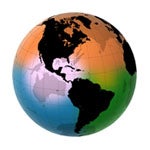Looking for more insights?
Sign up to stay informed about our latest article releases.
No region will be immune from the international financial crisis sparked by the subprime mortgage debacle in the United States. This includes Latin America, which had recently enjoyed good times thanks to growing foreign investment and rising commodity prices. Now, Latin America is looking fearfully to the north, trying to predict the degree to which it will be affected by the earthquake in the U.S. Experts analyze the impact the credit crunch will have on various Latin American countries for Universia-Knowledge at Wharton.

Sign up to stay informed about our latest article releases.